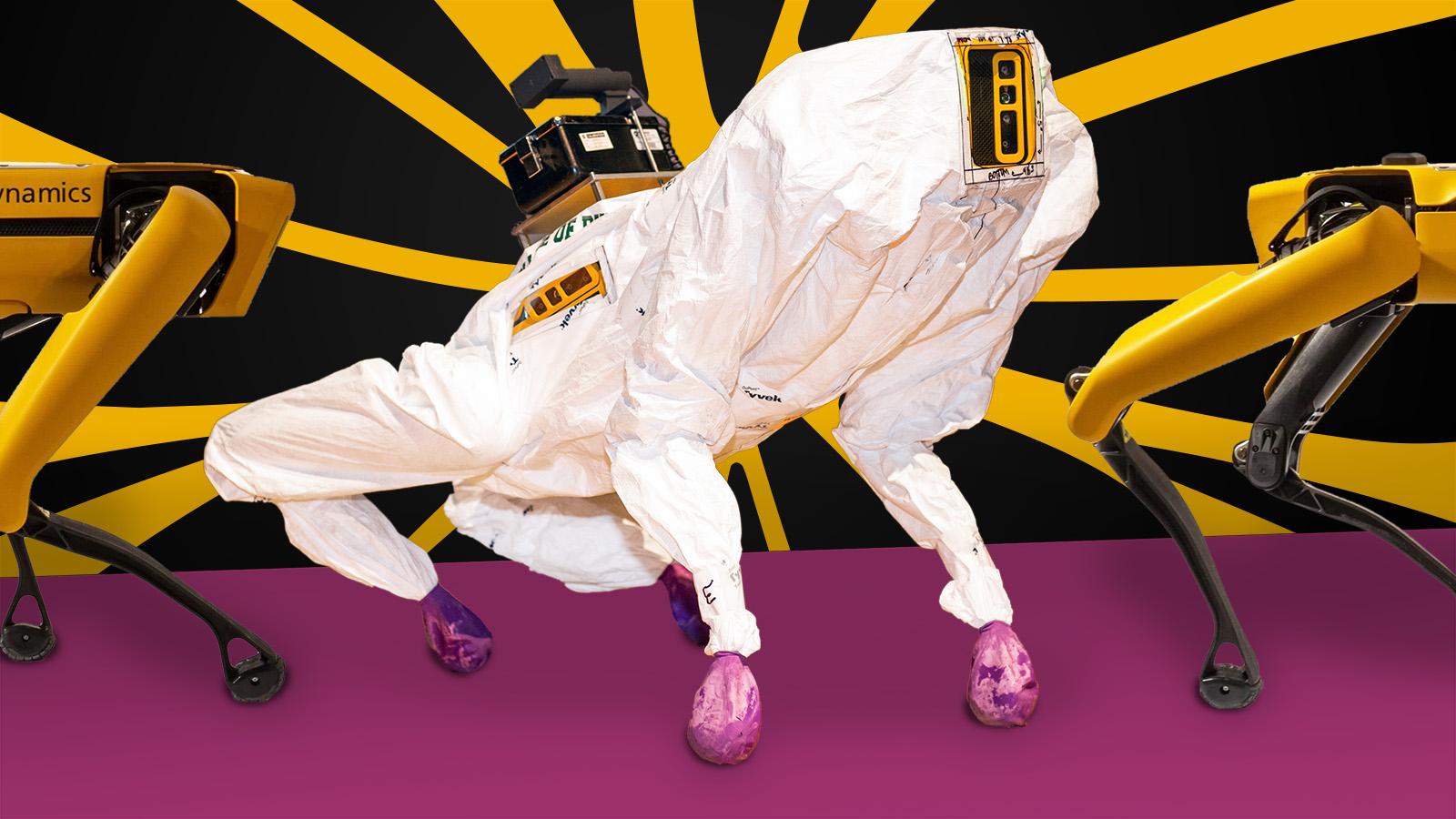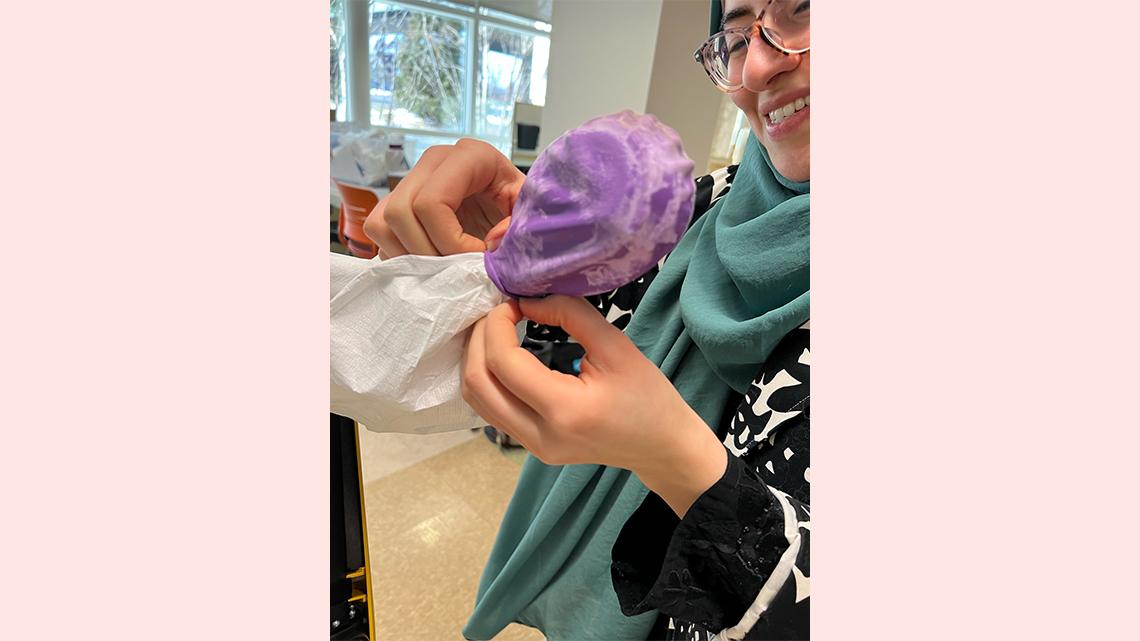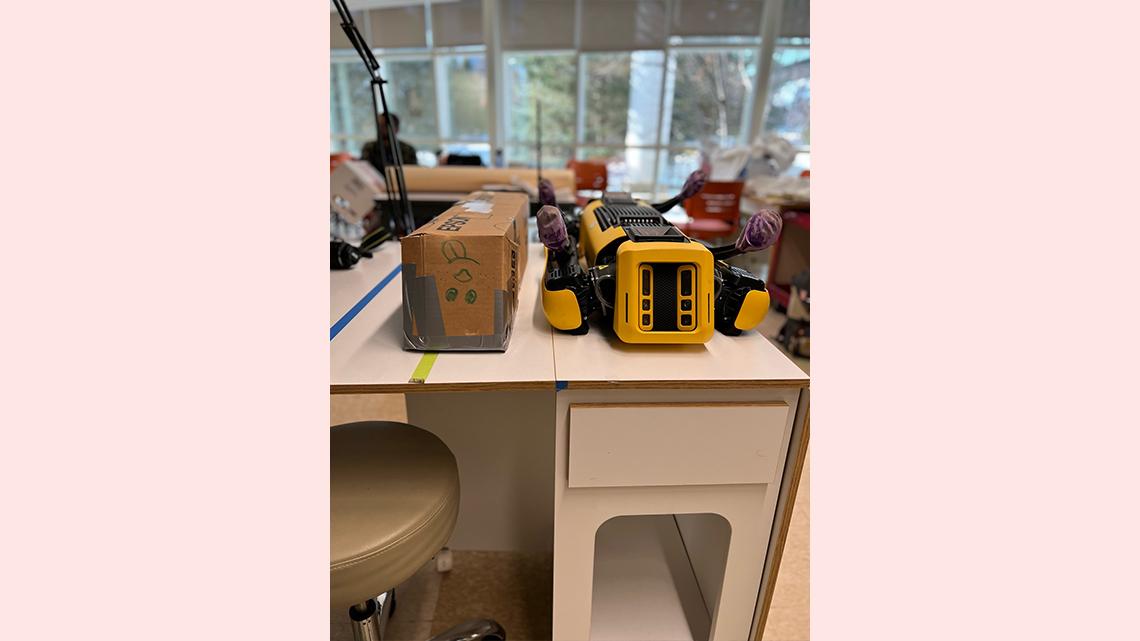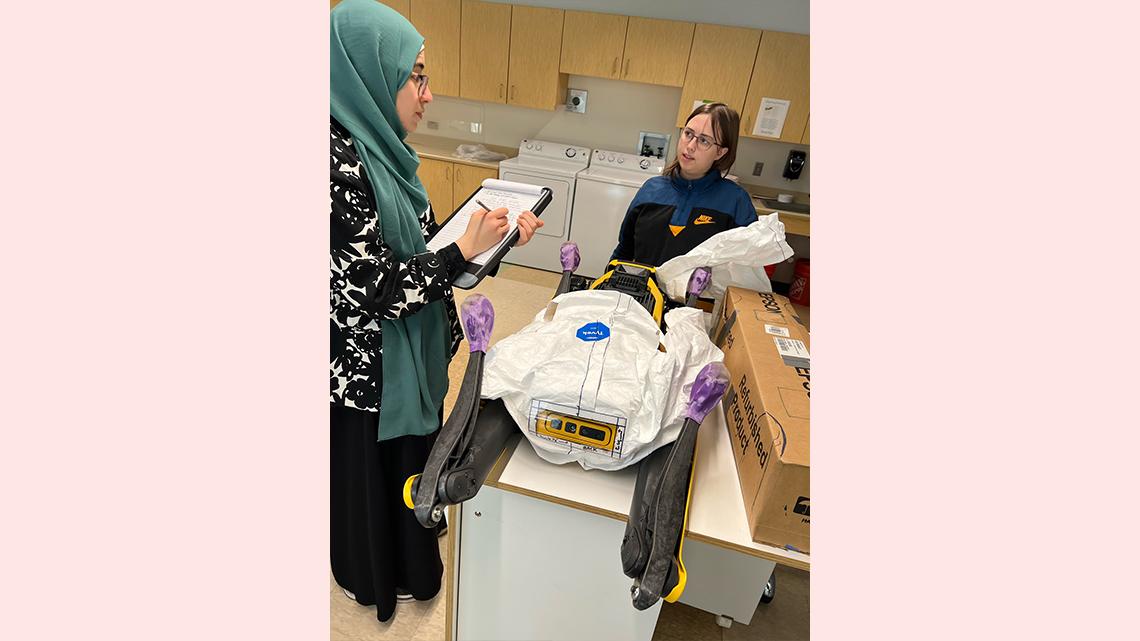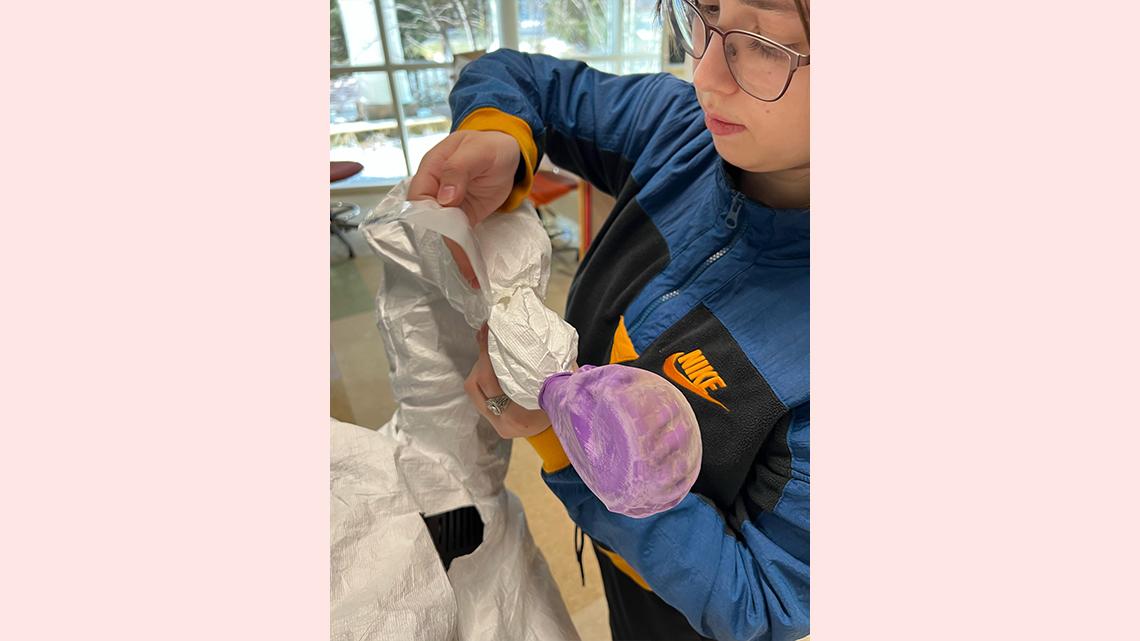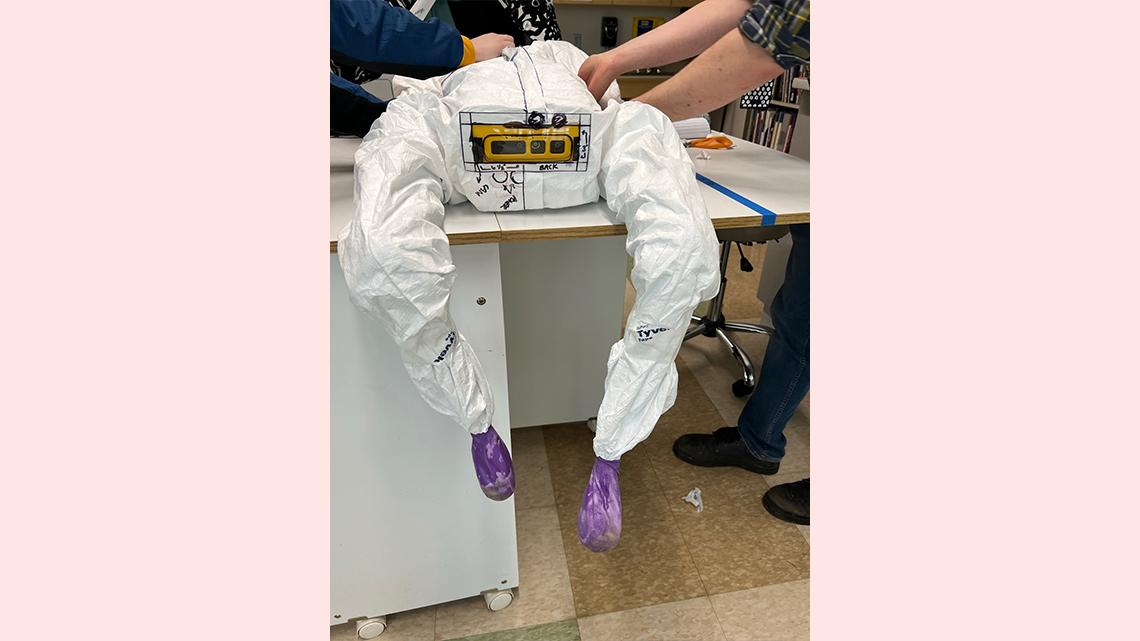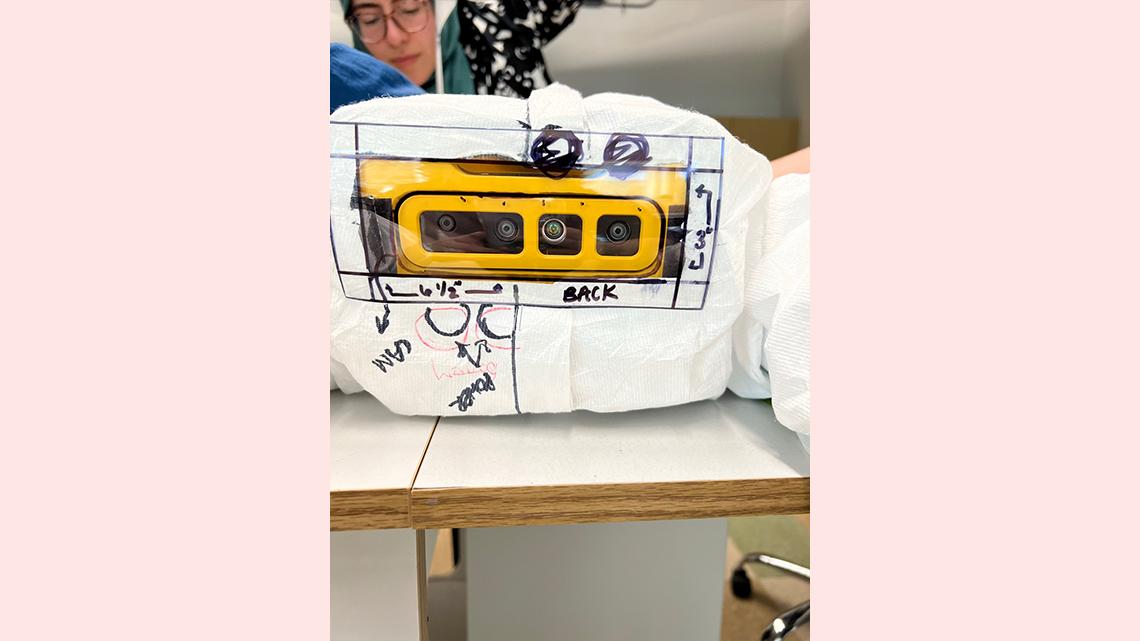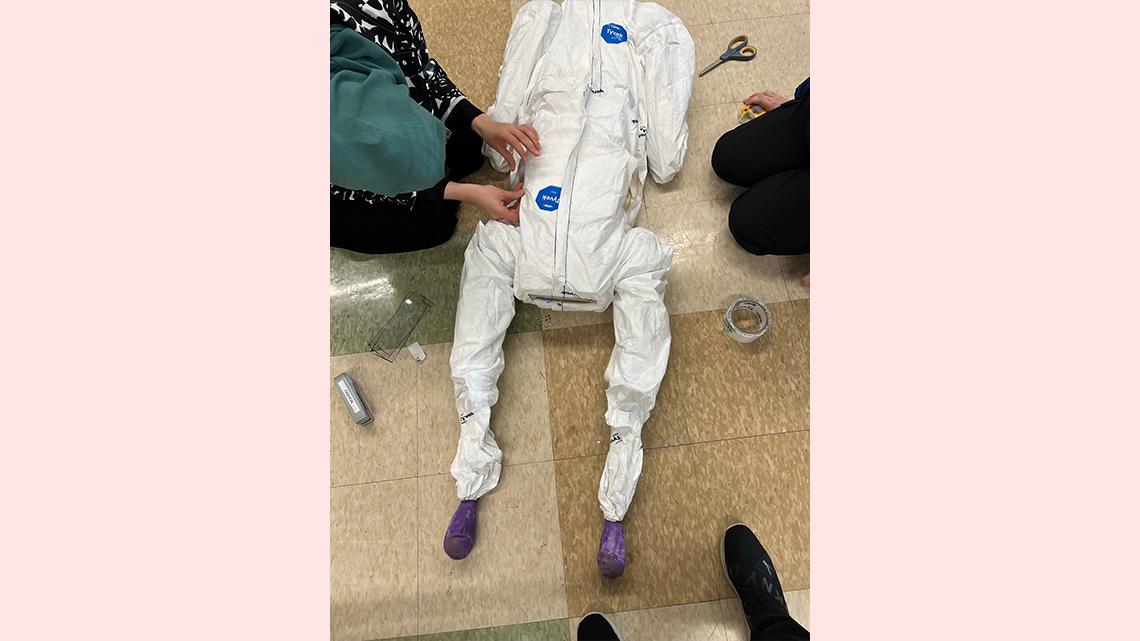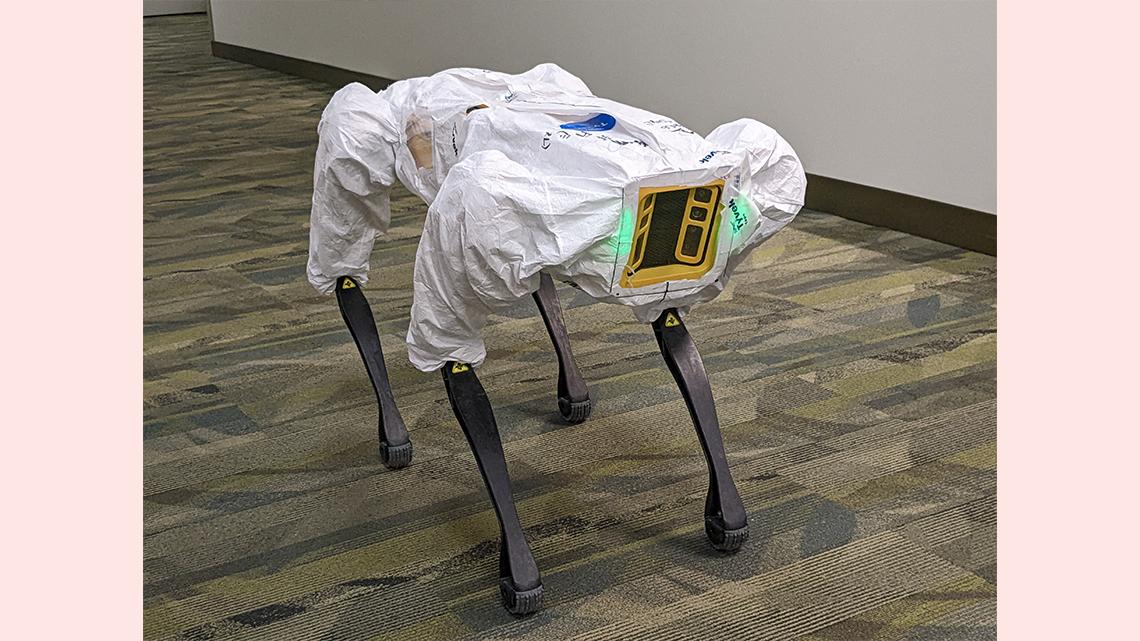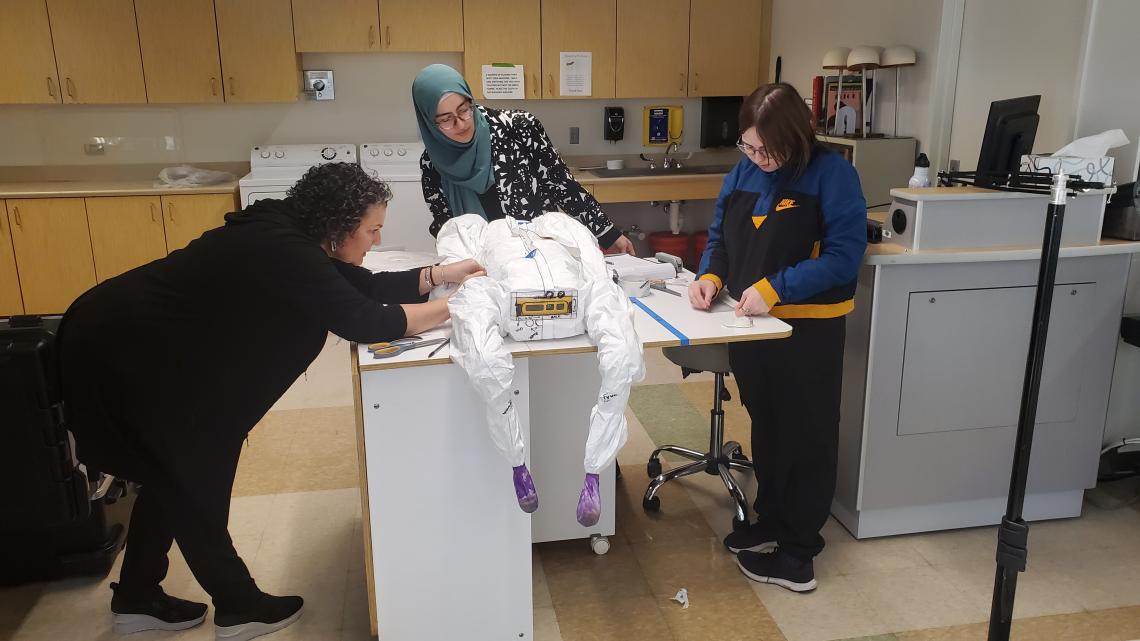In a recent demonstration for Engineers Week in Chicago, an engineering physicist took the stage accompanied by an unusual guest: a four-legged robot wearing personal protective gear.
It all started in 2019 when a team of engineers, physicists, software developers and technicians gathered at the US Department of Energy’s Fermi National Accelerator Laboratory to explore and develop robotic technologies. Their goal was, and still is, to use those technologies to help people safely and efficiently run the lab’s particle accelerators.
“Robots have a great potential to help us minimize personnel exposure to environmental hazards, such as radiation, and increase operational efficiency of the accelerators,” says Mayling Wong-Squires, the leader of the Fermilab Accelerator Directorate’s Robotics Initiative.
To create particle beams, Fermilab scientists accelerate protons to high energies by steering them through beam lines using magnets. Crashing a beam into a target material produces new particles that can be directed into new beams, but it also produces radiation. Accelerators can also generate radiation, and materials in the accelerator housing, ranging from tools to structures to even dust, can become activated.
The accelerator team carefully controls the beam to minimize the amount of radiation generated. When repairs are necessary, they shut down the accelerator and wait to enter the shielded tunnel that houses the beam lines until the radiation has decayed to a level safe for humans. Even then, there are strict protocols about how long a person can stay in the tunnel.
However, “we can send a robot into the tunnel while personnel wait to access the tunnel,” Wong-Squires says.
To demonstrate, the team brought on a unique new member: SPOT. Created by engineering and robotics design firm Boston Dynamics, SPOT is a dog-like robot capable of moving through a variety of environments while avoiding obstacles. It can communicate with users through both Wi-Fi and 5G networks, a functionality meant to one day enable remote control.
SPOT is meant to be a test case to determine how robots could be integrated into regular Fermilab operations, says Adam Watts, an engineering physicist and member of the initiative. “SPOT allowed us to jump ahead while we build more purpose-focused robots,” he says.
But before sending SPOT to roam any accelerator tunnels, the team needed to protect it from radioactive contamination.
SPOT itself can withstand the radiation present after the accelerator is shut down, Watts says, but if radioactive dust gets into its cracks and crevices, “you may never get it to the point where you can safely take it back to your lab, or out to high schools and colleges to show people.”
Wong-Squires says the first solution she pictured was the one they went with: The robot needed personal protective equipment, or PPE, similar to the Tyvek coveralls and shoe covers worn by Fermilab personnel. “My daughter is in theater, so I looked for a [university] theater group who specializes in creating costumes,” she says. “I was seeking experts who could design PPE that can be easily replicated by Fermilab personnel using materials and tools that are readily available at the lab.”
Instead of a theater troupe, Wong-Squires found the fashion studies department at College of DuPage, a mere half-hour drive from Fermilab. There, she surmised, would be people with the expertise to create some unusual PPE. She reached out to Eva Stevens, the program director of the Fashion Studies Department, to start a collaboration.
Stevens and her students were immediately on board. “We were so excited to do it,” she says, “[SPOT is] not soft and it doesn't follow the regular block patterns that we use when we make garments, so it was a very fun challenge.”
The students were constrained to developing a pattern that could be followed by engineers and technicians without a background in fashion design. “They should be able to go into their storeroom, grab supplies, put our pattern down, make [the PPE] and use it within minutes,” Stevens says.
Over a dozen students showed up to the first brainstorming meeting. It was the first time anyone on the fashion team had designed clothing for a nonhuman, and questions abounded, from SPOT’s measurements to the consistency of the dust the PPE was to protect it from. “Being able to bounce ideas off of other people is super nice,” says Lauren Evans, one of the two students who stayed on the project until the end.
Unfortunately, SPOT was not available to model their designs. Instead, a cardboard box approximately the same size as SPOT’s body acted as their dress form, the specialized mannequin designers use to fit and pin clothing. To differentiate the front end of the cardboard robot from the back, the students gave it a cartoon dog face. Apart from the dress form, the team used parts of prosthetics from a past Frida Kahlo exhibit at the fashion school to mimic how the robot’s joints would move and ensure the fabric wouldn’t get pinched.
“Working on a cardboard box versus an actual human being or a body was way harder than any of us expected,” says Rahaf Damra, the other fashion student who stayed on the project through the final design.
After they developed prototype designs with box SPOT, the students had a few fittings with the real thing. The first time the fashion team saw SPOT in person, Evans says she immediately thought, “That is not the same size as our box.”
Despite this, by the second fitting, the team had the design perfected.
“I think the biggest breakthrough in our process was realizing that we could use the suits used for people to cover the robot,” Evans says.
Modifying existing PPE simplified the process significantly—there was no need to ask Fermilab employees to sew a new armhole or sleeve, which can be tricky for the untrained designer. The team was worried about protecting SPOT’s feet, but Stevens suggested a quick fix: rubber dog booties, the ones available at pet stores. The students were pleasantly surprised to find that the pet supplies fit perfectly.
The first body design was a bit too tight, and parts of the PPE covered vital cameras, interfering with SPOT’s ability to detect obstacles. Making the body pattern slightly larger improved airflow around the robot, and a few strategic pieces of Velcro secured the PPE in place, keeping the cameras clear.
The most recent fitting went smoothly—SPOT wore its new PPE to the presentation at Engineers Week, strutting across the stage and down stairs, unencumbered by the clothing. Now it’s just a matter of formalizing the pattern.
Damra says they are making sure the pattern can be followed by anyone. “We have to make sure we aren’t using industry jargon,” she says. “With our instructions, I think that any engineer will be able to make it.”
Wong-Squires and the rest of the interdisciplinary team emphasize how rewarding the non-traditional collaboration was. “We're really, really, really excited,” she says. “I think the folks in the fashion studies department did a fantastic job, and I can't wait for them to send the pattern to us so we can try it out.”
The students echo Wong-Squires’ enthusiasm. “We are always looking to help robots from now on,” Damra says. “If anyone needs robot clothes, reach out!”



